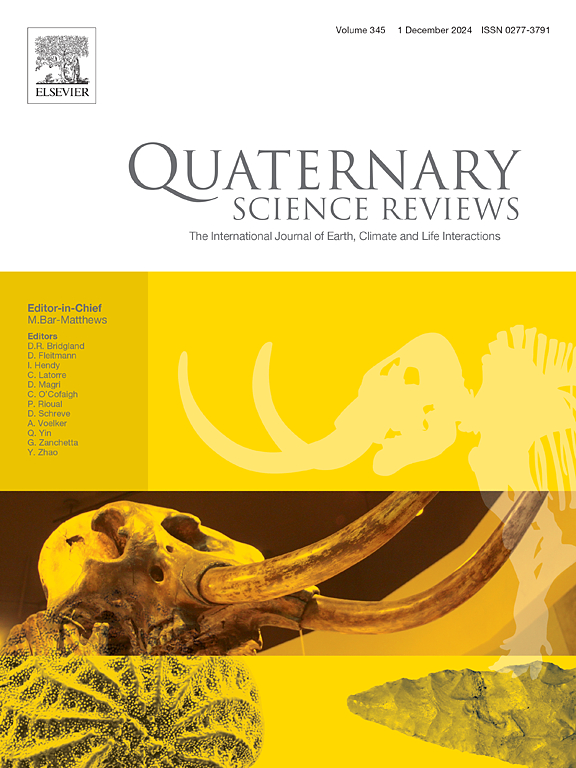Environmental setting of the Neolithic Agricultural Revolution across the Fertile Crescent
IF 3.2
1区 地球科学
Q1 GEOGRAPHY, PHYSICAL
引用次数: 0
Abstract
The transformation of human culture from hunter-gatherer societies to sedentary farming communities represents the most prominent revolution in human history, termed the Neolithic Agricultural Revolution (NAR). The NAR was manifested in the cultivation and domestication of wild plants across the ‘Fertile Crescent’ from around the 11th millennium BP. Here, we investigate the environmental conditions that enabled the establishment of the first agricultural settlements in the southern Jordan Valley and compare these settings to the northern segments of the ‘Fertile Crescent’ (northern Mesopotamia). In particular we investigated the mineralogical composition of surface cover soils and the hydrological conditions in the Gilgal Basin where a few of the early agriculture settlements of the late Natufian-PPNA cultures were established. We focused our study on the Salibiya sedimentary section (and archeological sites) in the Gilgal Basin, where a sequence of fine detritus sediments accumulated during the post glacial to the early Holocene period. OSL ages from the Salibiya sedimentary section lie between ∼24 and 11 ka BP, spanning the time of Lake Lisan retreat from its highest stands of ∼180 ± 10 m below mean sea level (= m bmsl) to below 320 m bmsl. The Salibiya sedimentary section consists of silty detritus sediments that comprise recycled mountain soils washed from the adjacent Samarian Mountains to the Gilgal Basin. The ‘mountain soils’ in their turn consist of desert dust grains (e.g., quartz, calcite, clays) that were blown to the Levant region from the north Sahara deserts, mostly during arid periods. Enhanced amounts of desert dusts were blown to the region during hyperarid periods that coincided with the Heinrich Stadials (HS) in the northern latitudes, e.g., at ∼24 ka, ∼16ka and ∼13ka. The hyperarid and dusty periods (which were harsh for the early-Natufian hunter-gatherers) were followed by wetter intervals when fresh groundwater activity resumed in the Judean and Samarian Mountains, e.g., at ∼16-15 and ∼12-11 ka. The availability of fertile ‘mountain soils’ and water during and after the Younger Dryas provided a favorable environmental setting that supported the establishment of early agriculture settlements in the Gilgal Basin (and others) in the Jordan Valley and impacted the transformation from the Epipalaeolithic Early Natufian hunter-gatherers to the Late Natufian and Pre-Pottery Neolithic A and B (PPNA, B) cultures.
求助全文
约1分钟内获得全文
求助全文
来源期刊

Quaternary Science Reviews
地学-地球科学综合
CiteScore
7.50
自引率
15.00%
发文量
388
审稿时长
3 months
期刊介绍:
Quaternary Science Reviews caters for all aspects of Quaternary science, and includes, for example, geology, geomorphology, geography, archaeology, soil science, palaeobotany, palaeontology, palaeoclimatology and the full range of applicable dating methods. The dividing line between what constitutes the review paper and one which contains new original data is not easy to establish, so QSR also publishes papers with new data especially if these perform a review function. All the Quaternary sciences are changing rapidly and subject to re-evaluation as the pace of discovery quickens; thus the diverse but comprehensive role of Quaternary Science Reviews keeps readers abreast of the wider issues relating to new developments in the field.
 求助内容:
求助内容: 应助结果提醒方式:
应助结果提醒方式:


